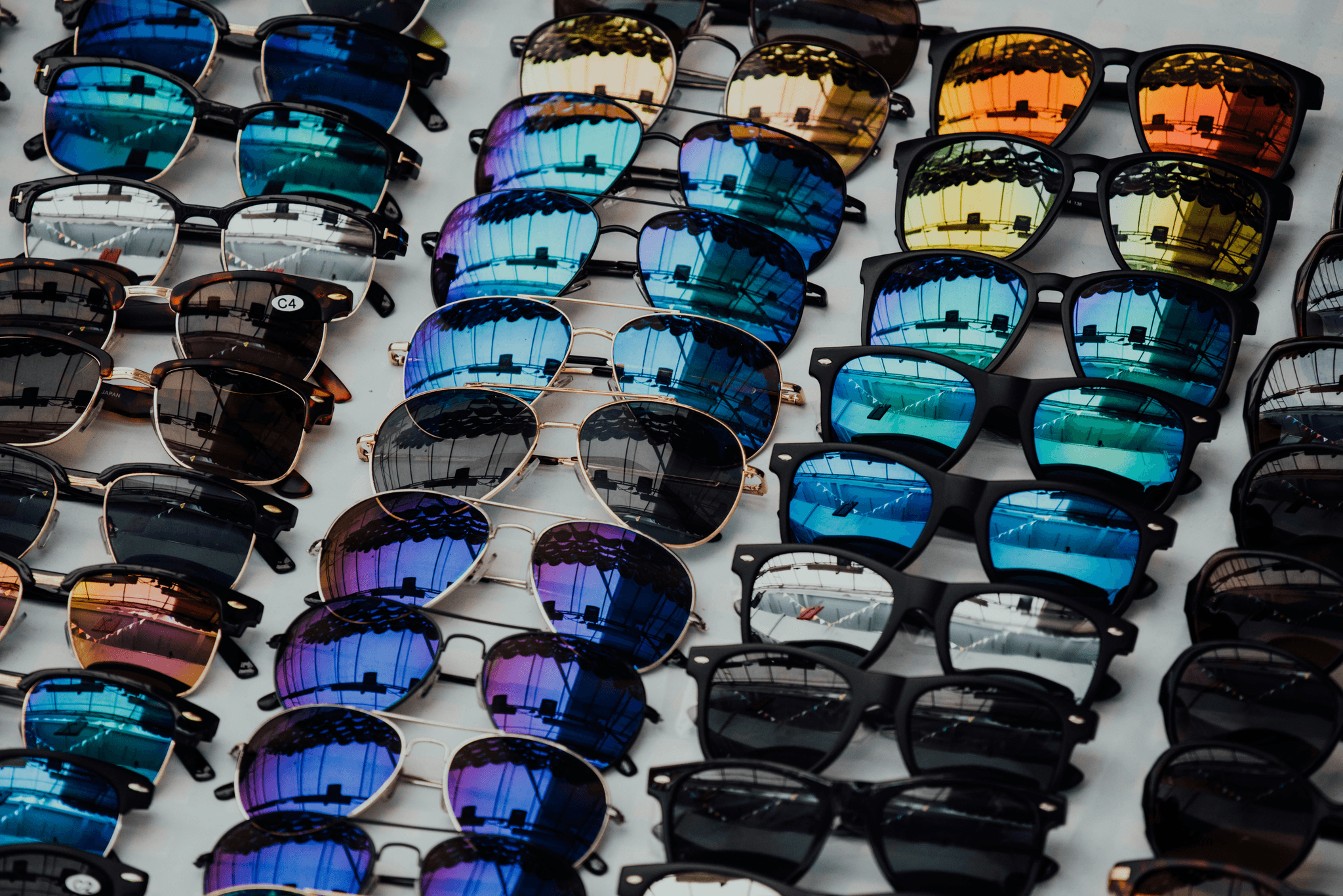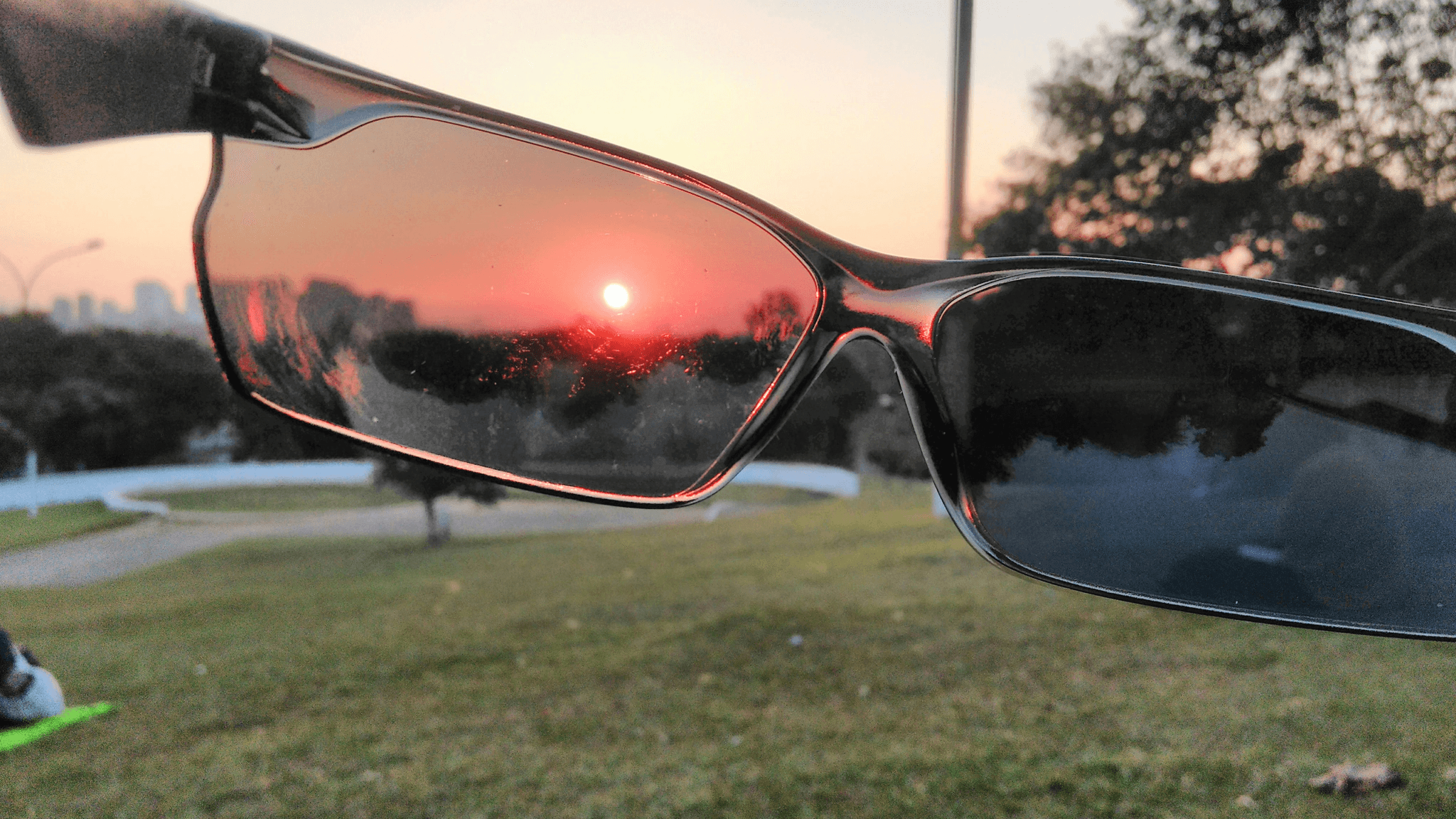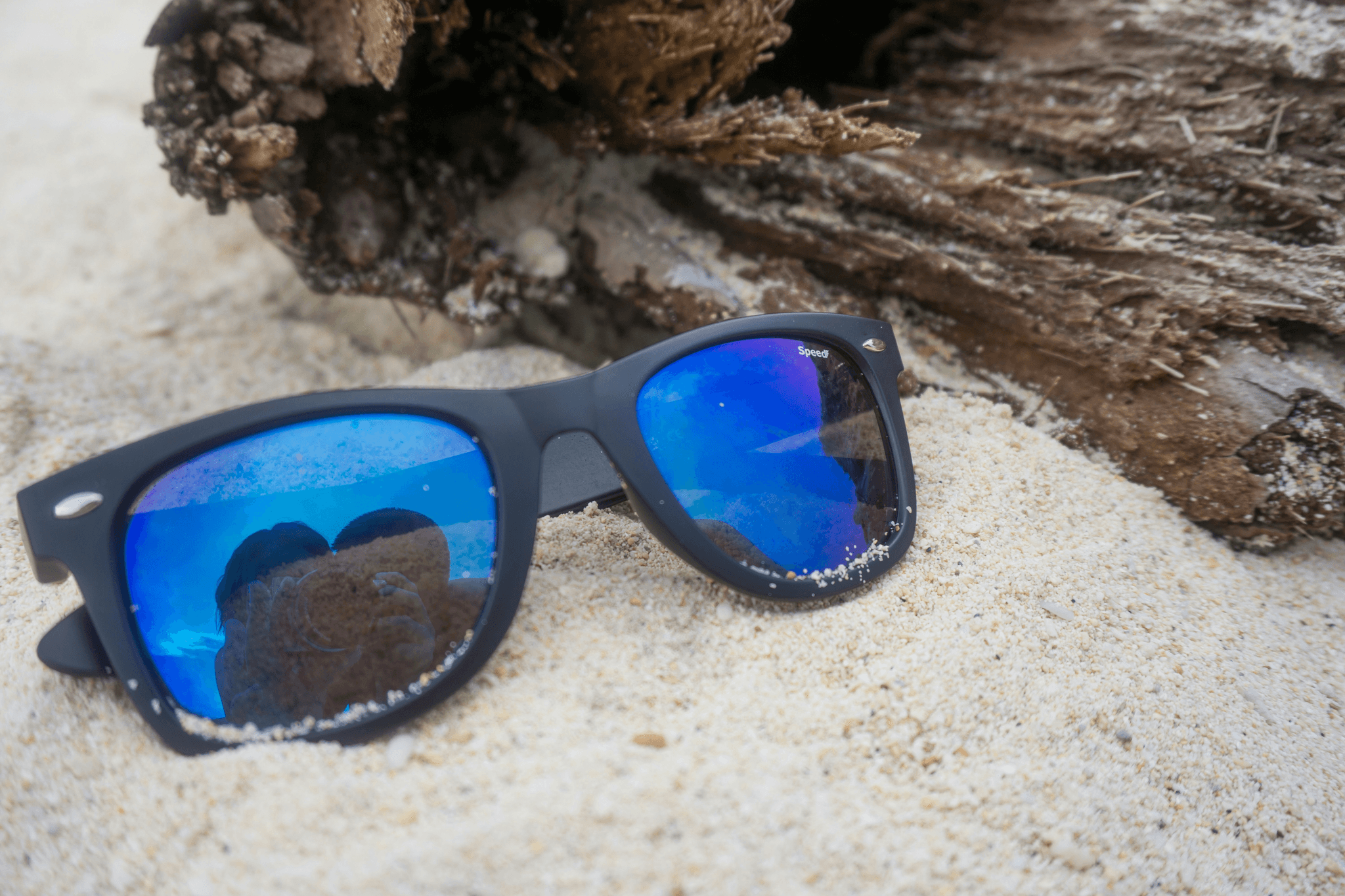Introduction

Understanding Sunglass Lens Composition
The lens of sunglasses can be crafted from various materials, each offering unique characteristics that influence performance and durability. From traditional glass to modern plastics and polycarbonate options, knowing what these materials bring to the table is essential for anyone shopping for eyewear. Whether you're after color sunglasses that pop or scratch resistant sunglasses that withstand daily wear, understanding lens composition will guide your choices.
Exploring Different Lens Materials
When it comes to types of sunglasses, the material used for the lenses plays a pivotal role in their functionality. Glass lenses provide exceptional clarity but can be heavier and more fragile compared to plastic options. On the other hand, lightweight plastic lenses offer comfort and versatility, especially in polarized prescription glasses designed for those who need vision correction while enjoying outdoor activities.
Benefits and Drawbacks of Each Material
Each lens material comes with its own set of benefits and drawbacks that can significantly affect your experience with sunglasses. For example, while glass lenses boast superior optical quality and scratch resistance, they may not be ideal for active lifestyles due to their weight. Conversely, plastic lenses are often favored for their affordability and lightweight nature but may lack some durability against scratches compared to their glass counterparts.
What Are Sunglass Lenses Made Of

When you ponder over what are sunglass lenses made of, the answer is as varied as the styles they come in. The materials used to craft these lenses can significantly influence your eyewear experience, from comfort to clarity. Understanding these materials helps you make informed choices when selecting prescription glasses and sunglasses that best fit your lifestyle.
Common Materials Used for Sunglass Lenses
The most common materials used for sunglass lenses include plastic, glass, and polycarbonate. Plastic lenses are lightweight and often more affordable, making them a popular choice for everyday sunglasses. On the other hand, glass lenses are known for their superior optical clarity but can be heavier and more prone to breakage—perfect for those colorful sunglasses that demand vibrant visuals.
Polycarbonate lenses have surged in popularity due to their impact resistance, making them an excellent choice for active lifestyles or sports enthusiasts who need durable eyewear. Additionally, polarized prescription glasses often utilize these materials to reduce glare while providing UV protection. Each type of lens material brings its unique advantages to the table, catering to diverse preferences and needs.
How Material Affects Lens Performance
The material of sunglasses directly affects their performance in various conditions—think clarity, weight, and durability. For instance, plastic lenses may be lighter but can sometimes compromise on optical quality compared to glass lenses; hence why many opt for color sunglasses with glass when visual fidelity is paramount. Conversely, polycarbonate offers a balance between safety and clarity—ideal for those who lead an active lifestyle without sacrificing vision quality.
Moreover, each material has different refractive indices that affect how light passes through the lens of sunglasses; this means some materials may enhance or distort colors differently than others. If you're looking at scratch resistant sunglasses, it's crucial to consider how well each material holds up against daily wear and tear while maintaining performance standards over time.
The Role of UV Protection in Lens Materials
One critical aspect of what are sunglass lenses made of is their ability to provide UV protection—a must-have feature in any pair of shades worth wearing! Different lens materials offer varying levels of UV protection; generally speaking, plastic tends to block most harmful rays effectively while remaining lightweight and comfortable for daily use. However, not all plastic or polycarbonate options guarantee complete UV defense; always look out for labels indicating 100% UVA/UVB protection when shopping.
Glass lenses can also provide excellent UV blocking capabilities but may lack some flexibility found in modern synthetic options like polycarbonate or high-index plastics—so it’s essential to weigh pros and cons based on your specific needs. Ultimately, understanding the role that lens material plays in eye safety will help elevate your eyewear experience whether you're rocking stylish prescription glasses or outdoor-ready polarized shades.
The Case for Plastic Lenses

Lightweight and Comfortable for Daily Wear
One of the standout features of plastic lenses is their featherlight nature, which makes them ideal for everyday use. Unlike sunglasses with glass lenses that can feel heavy after prolonged wear, plastic options offer a comfortable fit that won’t leave you with sore spots on your nose or behind your ears. This lightweight quality is especially beneficial when considering types of sunglasses designed for active lifestyles, where comfort is key.
Cost-Effectiveness Compared to Glass
When pondering what are sunglass lenses made of, it’s essential to consider both performance and price point. Plastic lenses tend to be more affordable than their glass counterparts, making them an attractive option for budget-conscious consumers looking to invest in stylish prescription glasses and sunglasses without breaking the bank. Plus, with various styles available—from classic aviators to trendy color sunglasses—there's no need to compromise on aesthetics while saving some cash.
Options for Polarised Prescription Glasses
Plastic lenses also shine when it comes to versatility; they can be easily manufactured into polarised prescription glasses tailored to individual needs. This means you can enjoy enhanced glare reduction while still benefiting from corrective vision—a win-win situation! Whether you're hitting the water or enjoying a sunny day out, having polarised options in your arsenal allows you to choose sunglasses that suit both style preferences and practical requirements.
The Appeal of Glass Lenses

Superior Optical Clarity and Scratch Resistance
One of the standout features of glass lenses is their remarkable optical clarity. Unlike some plastic options, which can distort vision slightly, glass provides a crystal-clear view that is hard to beat. Furthermore, the inherent scratch resistance found in quality glass means your sunglasses will withstand the rigors of daily life while still looking sharp—perfect for those who wear prescription glasses and sunglasses alike.
Durability and Weight Considerations
While it’s true that glass lenses are heavier than their plastic counterparts, this weight often translates into durability and longevity. Many people find that despite being slightly heavier, they prefer the sturdiness that comes with wearing sunglasses with glass lenses. This durability makes them a top choice for various types of sunglasses—from sporty designs to stylish everyday wear—ensuring they can handle whatever life throws at you.
Ideal for Color Sunglasses with Enhanced Colors
For those who enjoy vibrant hues in their eyewear, color sunglasses featuring glass lenses shine brightly in this category. These lenses can enhance colors beautifully without any distortion or fading, making your outdoor adventures even more enjoyable. Whether you're choosing polarized prescription glasses or simply seeking stylish shades, you'll appreciate how well these high-quality materials bring out the best in your surroundings.
The Rise of Polycarbonate Lenses

Polycarbonate lenses have become a popular choice for many eyewear enthusiasts, particularly those leading active lifestyles. Known for their impressive impact resistance, these lenses can withstand the rigors of daily wear and tear, making them ideal for those who engage in sports or outdoor activities. When considering what are sunglass lenses made of, polycarbonate stands out due to its unique combination of durability and lightweight comfort.
Impact Resistance for Active Lifestyles
One of the primary reasons polycarbonate lenses are favored is their remarkable impact resistance. This feature ensures that whether you're cycling down a mountain or playing beach volleyball, your sunglasses can handle unexpected bumps without shattering. For anyone looking at prescription glasses and sunglasses that prioritize safety without compromising on style, polycarbonate is often the go-to material.
Popularity in Sports and Outdoor Activities
The popularity of polycarbonate lenses in sports is not just a trend; it's a necessity. Athletes and outdoor enthusiasts appreciate how these lenses provide both protection and clarity while engaging in high-energy activities. From color sunglasses designed for vibrant outdoor experiences to sunglasses with glass lenses that might not offer the same level of safety, polycarbonate remains the preferred choice for performance-driven eyewear.
The Balance Between Safety and Clarity
While safety is paramount, clarity shouldn't be overlooked when discussing what are sunglass lenses made of. Polycarbonate offers excellent optical quality, allowing wearers to enjoy clear vision while participating in their favorite activities. However, it’s essential to consider options like polarised prescription glasses if you want to reduce glare without sacrificing clarity—ensuring you strike the perfect balance between safety and visual experience.
Scratch Resistant Sunglasses: A Must-Have

Benefits of Scratch Resistance in Everyday Use
Scratch-resistant sunglasses offer numerous benefits that make them a smart choice for anyone who values their eyewear. First and foremost, these types of sunglasses maintain optical clarity longer than their non-scratch-resistant counterparts, ensuring you can enjoy crisp visuals without the distraction of scratches. Additionally, these lenses are ideal for active lifestyles; from outdoor adventures to everyday errands, they hold up against potential scratches from various environments.
Furthermore, investing in scratch-resistant sunglasses means less frequent replacements—saving both money and resources in the long run. This durability is especially important for those who wear prescription glasses and sunglasses regularly; you want your lenses looking pristine without constant upkeep. So whether you're rocking color sunglasses or classic shades with glass lenses, scratch resistance is a must-have feature.
Innovations in Lens Technology
The world of lens technology has seen remarkable advancements aimed at improving the durability and functionality of sunglass lenses. Manufacturers have developed coatings that enhance scratch resistance while maintaining lightweight comfort—a crucial factor for prescription glasses and sunglasses alike. These innovations not only protect against everyday wear but also improve resistance to UV rays, ensuring your eyes stay safe while you look stylish.
New materials have also emerged in the realm of sunglass lens production; polycarbonate and high-index plastics are now common choices due to their inherent lightweight nature combined with impressive impact resistance. This means that even if you're engaging in sports or outdoor activities, you can trust that your polarized prescription glasses will stand strong against life's bumps and scrapes. With ongoing research into lens technology, the future looks bright for those seeking durable yet fashionable eyewear options.
Choosing the Right Lens for Your Needs
Start by evaluating what activities you'll be engaging in—if you're frequently outdoors or participating in sports, opt for polycarbonate options known for their impact resistance alongside scratch protection. For those who prefer a classic look with enhanced color clarity, consider investing in quality glass lenses designed specifically with durability features.
Additionally, don't forget about personal style! The market offers various types of sunglasses—from sleek aviators to oversized frames—so finding a pair that complements both function and fashion should be enjoyable rather than daunting. Ultimately, understanding what are sunglass lenses made of will empower you to choose wisely among available options while elevating your eyewear experience.
Conclusion
In the world of eyewear, striking the perfect balance between functionality and style in sunglasses is essential. While you want to look good, it’s crucial to ensure that your lenses provide adequate protection and performance. Understanding what are sunglass lenses made of can help you choose a pair that complements your lifestyle while also safeguarding your eyes.
Balancing Functionality and Style in Sunglasses
When selecting types of sunglasses, consider how each lens material affects both style and usability. For instance, color sunglasses may offer a trendy look but might not always provide the best UV protection if not made from quality materials. By understanding what are sunglass lenses made of, you can find a fashionable pair that doesn’t compromise on eye safety.
Making Informed Choices for Eye Protection
Knowledge is power when it comes to making informed choices about prescription glasses and sunglasses alike. Whether you opt for scratch resistant sunglasses or polarized prescription glasses, knowing their benefits will help ensure maximum eye protection. Always prioritize UV protection and lens quality; after all, your vision deserves the best!
Elevate Your Eyewear Experience with Daposi
Daposi offers an array of stylish options that cater to various needs—be it sports enthusiasts looking for impact-resistant polycarbonate lenses or those who prefer the clarity of sunglasses with glass lenses. With Daposi's commitment to quality and innovation, elevating your eyewear experience has never been easier! Explore their collection today and discover how different types of sunglasses can enhance both your style and eye health.
